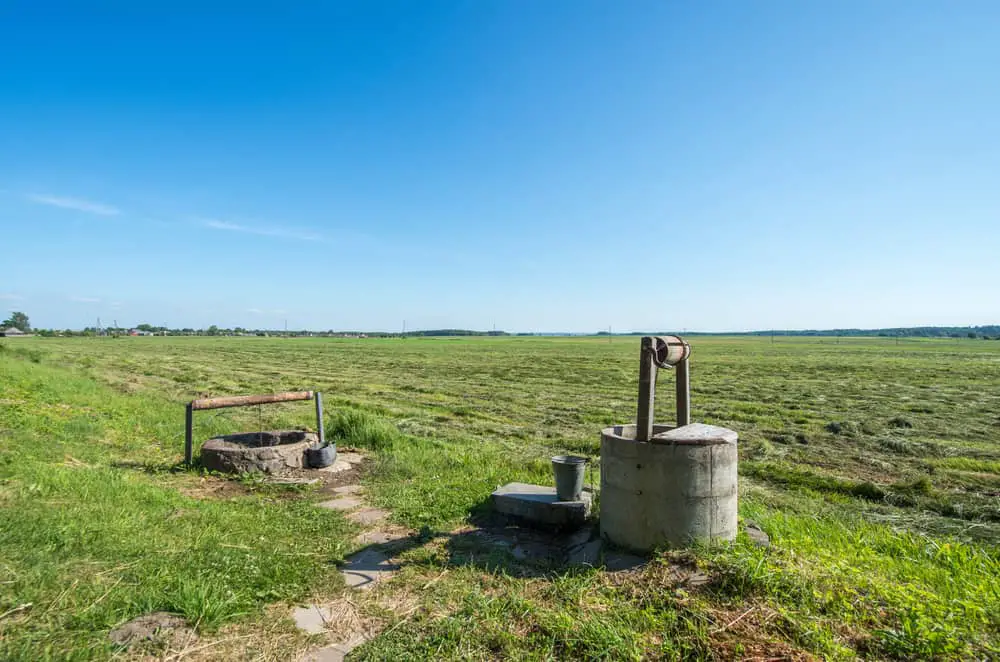Wells serve a significant role in ensuring that your home has an adequate water supply.
If you need water for numerous projects other than household water needs, it is important that you have an adequate water supply.
If you have one well that fails to supply the adequate water you need, you can opt to find another alternative source.
So, Can You Have Two Wells On Your Property?
If you have enough clearance space or live on a large property that can accommodate two wells, then go ahead and drill. Always make sure you follow the clearance regulations of your state. Also, remember to consider the positioning regulations for wells so that you don’t place them in a risky place.
One reason you may find it necessary to have two wells is if you live in an area that experiences drought.
To be safe, always ensure you adhere to all set housing and property management regulations.
Keep reading to understand more about wells clearance space, the need for two wells, and much more.
Keep This In Mind Before Getting Started On The Wells
Anything built or constructed on your property is solely your responsibility as the property owner or caretaker.
There are specific regulations for maintaining wells to help keep the safety of well water and groundwater resources.
If you can manage to have two wells and keep them safe according to the laws, you are allowed to go on and have these second wells.
Apparently, the law has set out the minimum rules to guide and license individuals and companies that construct the well.
Laws are also set to govern the location of a new well, how it is maintained, construction of the well, abandoned was, and reporting well activities.
These regulations require you to submit all well records at every step.
If you have two wells, ensure they are well-spaced and positioned. A good well should be positioned some distance from nearby structures. The general rule is that a well should be 25 feet from any border. With two wells, the second one should be at least 150 meters from the first well.
Five Water Well Placement Tips
The location you choose to put your well is a very important factor in ensuring you get an adequate water supply from the well.
It will also determine the effort you will need to apply in terms of treating the well water and also keeping it safe.
1. Choose A Raised Place
A well should be positioned at a place where rainwater flows away from it. So putting the well in a raised place is the best thing to do, especially if it is an open well.
Then it rains heavily; water will run from the raised place to the lower areas, leaving your well with clean water.
Otherwise, if put in lower regions, the rainwater will accumulate in it, and its water will get contaminated.
2. Keep The Well Away From Septic Drainage
You don’t want to have your water contaminated by human waste, as this is one of the causes of severe illnesses.
Keeping a well away from septic fields will help ensure your well water is clean.
The preferred minimum distance from a well to a septic field is determined by very many factors.
Some of these determinants are:
- The direction of groundwater
- The type of soil on your property
- The texture of this type of soil
- The height above the water table for the septic field
A qualified technician will help you get a good we’ll position to ensure your water is safe from contaminants.
3. Avoid Low Areas
The low areas of your home are likely to get flooded during rains.
Putting a well in such locations is a way of exposing the well water to contaminants.
If you must use the lower regions, create drainage lines for rainwater flow and avoid having stagnant water near your well.
4. Consider The Nearby Property
A drilled well should be some distance from your buildings and other structures.
If the drilling experts say that you have limited space for drilling a borehole, you can choose to find an extended property from your neighbor.
Before drilling on another person’s property, ensure you get their written permission and offer some compensation.
This can apply if the selected position is also safe for the neighbor’s structures.
5. Avoid Areas With Large Rocks
Large rocks are hard to drill through and can be a significant barrier to reaching the water table.
To be sure of where these stones are, call in experts to do some tests on your ground surface and identify if there are large stones underground.
Avoiding stony regions will help you spend less time drilling through to get to the water table. The happiest moment of a well driller is when they get to the water table. Make it easier by avoiding rocky places.
Conclusion
Two wells on a property are common in most homes that need a lot of water for household and farm activities.
If you are a large-scale farmer, you may find it necessary to have two wells; one for farm watering and another for common household use.
Another reason you may need two wells is if you live in a dry region.
Before drilling the second well, ensure you have enough space on your property.

